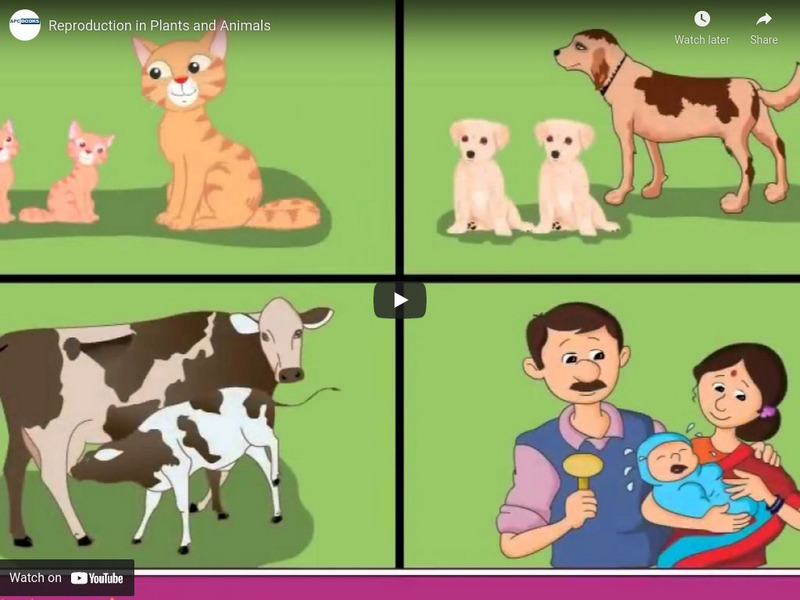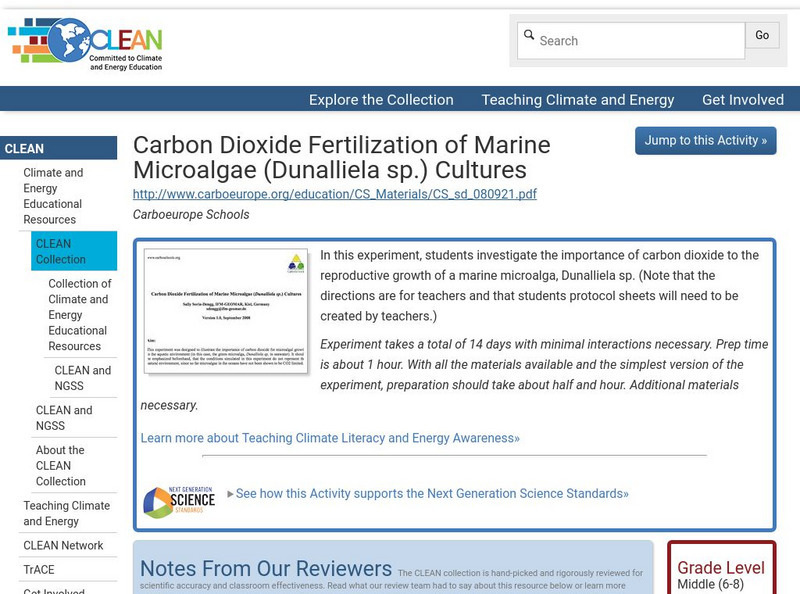Hi, what do you want to do?
Curated OER
How to Catch a Fish
Students conduct an experiment to demonstrate the effects of different fishing methods. In this commercial fishing lesson students create posters and public announcements to share their information.
Curated OER
Solve the Case!
Students discover the habits of panthers by solving fictitious crime mysteries. In this animal life lesson, students utilize their research from previous lessons to solve mysteries in a panther activity. Students answer...
Curated OER
Home on the Range
Students use maps and mathematics to determine the appropriate panther population in a given area. In this Florida ecology instructional activity, students research the area requirements of male and female panther and use a map to help...
Curated OER
Breaking News English: Laboratory-Created Eggs and Sperm
In this English worksheet, learners read "Laboratory-Created Eggs and Sperm," and then respond to 47 fill in the blank, 7 short answer, 20 matching, and 8 true or false questions about the selection.
Curated OER
Using Pictures to Read the Past
Students use primary and secondary sources, using the Internet and other media.
Curated OER
Ethical Decision Making in Biology
Students explore a model that illustrates the spread of HIV through an adolescent population. Acting in the role of epidemiologists, students explore the dilemmas of HIV infection presented by a simulation. Students produce a play, skit,...
Curated OER
Plants: Form and Function
In this plants worksheet, students compare and contrast vascular and non-vascular plants. Students learn the structure and function of the 3 types of plant tissues: dermal, ground, and vascular tissue. This worksheet has 27 fill in the...
Curated OER
Plants
Students plant bean seeds and draw pictures of the plants as they grow. They create their own garden, plant the seeds, and keep a journal of their growth.
Curated OER
"For the Birds" [part I]
Students identify birds that appear in Chinese and Japanese art, learning about
their physical characteristics, classifying them according to scientific principles, and exploring their habitats and migration patterns. This is part one...
Curated OER
Making Community Measurements: Which Plant Part?
Learners identify a plant in a given community and make a variety of measurements. They determine how a plant meets its basic needs. In addition to identifying plant parts, they observe seasonal change and compare plants within a community.
Curated OER
This Place is Going to the Dogs
Young scholars study different breeds of dogs. They watch a video, "Extraordinary Dogs", about special dogs and how they are categorized according to their adaptations. Then they create a digital video that demonstrates the qualities of...
Curated OER
Who Stole My Salad?
Eighth graders explain how protein is made in the cell. In this biology lesson plan, 8th graders translate RNA and DNA using an internet database. They determine the thief based on evidence collected.
Curated OER
Sexy Coral Reef and I Want My Own Space
Fifth graders explore how coral polyps increase the chances of egg and sperm meeting after being released into the vast ocean waters.
University of Oxford (UK)
Oxford University Museum of Natural History: Seven Life Processes
Explore the seven life processes that describe whether an animal is alive or not. Each characteristic is defined with examples and pictures. Also included is a living animal quiz to test how much you have learned.
E-learning for Kids
E Learning for Kids: Science: Hawaii: What Are the Life Processes in Animals?
Kamoku is a boy from Hawaii who is interested in the seven life processes. Do you know what these are? Join Kamoku and discover them with him.
Earth Life
Earth Life: The Diplopoda (Millipedes), Reproduction
General information on the reproductive processes which occur in the life of the millipede can be found here.
Other
Reproduction in Plants and Animals
Reproduction in Plants and Animals. The ability to produce more organism similar to themselves is a very important characteristic of all living organisms. The process by which they do so is known as reproduction. [0:21]
CK-12 Foundation
Ck 12: Life Science: 2.23 Meiosis
Understand the process of meiosis to produce two sex cells, or gametes.
CK-12 Foundation
Ck 12: Third Grade Science: Life Science: Plant Reproduction and Life Cycles
[Free Registration/Login may be required to access all resource tools.] Read about the processes of sexual reproduction in flowering plants, including pollination, fertilization (seed production), seed dispersal, and germination.
CK-12 Foundation
Ck 12: Fourth Grade Science: Life Science: Plant Reproduction
[Free Registration/Login may be required to access all resource tools.] Looks at the processes of sexual reproduction in flowering plants, including pollination, fertilization (seed production), seed dispersal, and germination.
CK-12 Foundation
Ck 12: Life Science: Cell Cycle
[Free Registration/Login may be required to access all resource tools.] The process of cell division in eukaryotic cells is carefully controlled. The cell cycle is the life cycle of a cell, with cell division at the end of the cycle....
PBS
Pbs Learning Media: Hummingbird Species in the Transitional Zones
This video segment from Evolution: "Darwin's Dangerous Idea" shows biologists Chris Schneider and Tom Smith studying hummingbirds and other animals in Ecuador. Their research is investigating the processes by which new species are formed.
Climate Literacy
Clean: Carbon Dioxide Fertilization of Marine Microalgae Cultures
In this experiment, students investigate the importance of carbon dioxide to the reproductive growth of a marine microalga, Dunalliela sp.
CK-12 Foundation
Ck 12: Life Science: Cloning
[Free Registration/Login may be required to access all resource tools.] Cloning is the process of creating an exact replica of an organism. The clone's DNA is exactly the same as the parent's DNA. Bacteria and plants have long been able...













!["For the Birds" [part I] Lesson Plan "For the Birds" [part I] Lesson Plan](http://lessonplanet.com/content/resources/thumbnails/122462/large/cgrmlwnvbnzlcnqymdeymtaxny0ynji5lwd4n2h5by5qcgc.jpg?1414222903)










